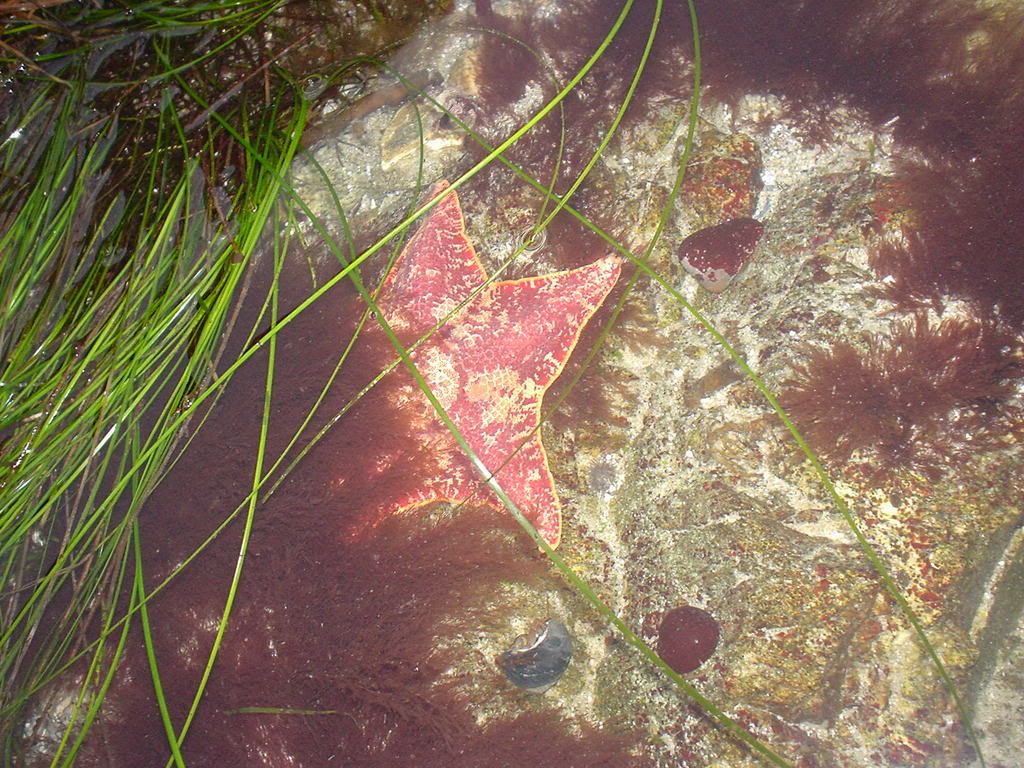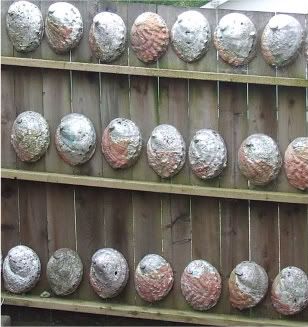You are using an out of date browser. It may not display this or other websites correctly.
You should upgrade or use an alternative browser.
You should upgrade or use an alternative browser.
Cold water tank.
- Thread starter JAR
- Start date
slim_jim989
Guest
Here some threads from my old reef group
http://www.reeffrontiers.com/forums/showthread.php?t=50628
http://www.reeffrontiers.com/forums/showthread.php?t=11453&highlight=coldwater
http://www.reeffrontiers.com/forums/showthread.php?t=50628
http://www.reeffrontiers.com/forums/showthread.php?t=11453&highlight=coldwater
Your going to have issues with sweating, that translates into more energy being used to chill the tank. I'd think about getting a tank that is much thicker acrylic than a standard tank, it will save you $$$ in the long run and you wont be hitting the tank with a squeegee every 5 minutes. Don't place any local urchins or large Haliotis in the tank either, unless of course you like radula marks on the acrylic, then by all means go for it 
G
GreshamH
Guest
Just remember it's illegal to keep anything alive from our coast for the most part. You can kill it and eat it, but you're not allowed to keep it alive 
G
GreshamH
Guest
Most everything is a no no here in CA. WA/OR it's fine but not here. Let me put it this way, you're not even allowed to collect zooplankton.
That first picture, nothing in it is allowed to be collected for aquaria. You can't even disturb that eel grass, or even take a single blade.
That first picture, nothing in it is allowed to be collected for aquaria. You can't even disturb that eel grass, or even take a single blade.
GreshamH said:Most everything is a no no here in CA. WA/OR it's fine but not here. Let me put it this way, you're not even allowed to collect zooplankton.
That first picture, nothing in it is allowed to be collected for aquaria. You can't even disturb that eel grass, or even take a single blade.
From certain areas? When I contacted F&G about this they said you could basically keep anything in an aquarium that you could take with a fishing license.
Hello Mary,
Here at the California Academy of Sciences we are asked frequently by the public what the legal requirements are to remove marine invertebrates from tidepools for use in home aquariums. Of course we have scientific collection permits for collecting animals for our public exhibits, but what steps would a member of the public need to take in order to legally collect an animal to place in their home aquariums? I thought we should get the right info so we can let them know when they ask.
Many thanks,
Matt Wandell
Aquatic Biologist II
Steinhart Aquarium
California Academy of Sciences
mwandell@calacademy.org
Hello Matt,
Thanks for contacting us on this issue. It's a complicated one (of course -- it couldn't be simple, now, could it?), dependent on the animals taken. The following information is from the Department's Law Enforcement Division:
Per the California Code of Regulations, Title 14 Section 1.62, the movement of live "finfish" is prohibited. Therefore, live marine fish may not be taken for display in a home aquarium except under a Marine Aquaria Collectors permit (available at Department license offices).
There is no corresponding law that applies to invertebrates, however. Maintaining live sport-taken invertebrates (for example, octopus) in a home aquarium should not be considered "display" as used in Fish and Game Code sections 8596-8597 re: Marine Aquaria Pet Trade. Therefore, octopus and other invertebrates may be maintained in a personal aquarium and do not fall under the provisions requiring a Marine Aquaria Collectors permit.
People may collect invertebrates under the authority of a sport fishing license and transfer them live as long as the animal is exclusively for that person's personal aquarium display. Invertebrates collected under the authority of a sport fishing license may NOT be used to establish breeding colonies for sale or trade with other collectors. This activity requires the collectors to have Marine Aquaria Collectors permits authorizing this activity. Even trading animals brings the activity under the provisions of Sections 8596-8597 because selling is a common part of any commercial activity especially as used in the Fish and Game Code. And possession for sale or trade are included in the definition of "sell" in Fish and Game Code Section 75.
Finally, transporting live invertebrates into a home aquarium is not restricted because Title 14 Section 1.62 only applies to the movement of live "finfish" and not to mollusks and crustaceans. And, there is no other general prohibition against transporting or possessing alive legally taken shellfish. Invertebrates can be kept alive forever, or a very long time, whichever comes first.
I hope this information answers your questions and clarifies what the law says regarding the collecting and personal display of marine animals. If you have any additional questions, feel free to contact us again.
yours,
Mary Patyten
Mary Patyten
California Department of Fish and Game
Marine Region Education and Outreach
(707) 964-5026
mpatyten@dfg.ca.gov
JAR said:I want to set up a cold water tank before April.
I need a chiller.
What else besides the normal reef stuff do I need?
Anyone running one out there?
Hey John, we run a bunch! Generally we try to keep it as cold as possible (we shoot for 52-ish F) and run the salinity a touch lower than tropical tanks (32-33 ppt). Bad stuff happens fast at high temperatures. Bacterial cycles take far longer in temperate tanks, so keep that in mind when stocking. I don't think you are allowed to take live substrate. What were you planning on using for rockwork?
Algae can become an issue and urchins are usually the best bet to control it. Red and purple urchins work great. There aren't really any equivalents to tangs/rabbitfish or grazing snails up here. The black turban snails that are all over the tidepools are pretty useless at algae control. Nitrate and phosphate management work just the same as in a reef. You may want to run some dead tropical live rock in the sump to provide a place for denitrification to take place. Calcium, alkalinity, low light and lots of flow will promote coralline algae just like in reef tanks but it grows much slower. You can skim heavy, run GFO, do vinegar/vodka dosing just like in a reef tank, but keep in mind to go slower with everything that requires a build up of bacterial population.
As for the sweating, we use 1/2" thick acrylic minimum and schedule 80 PVC on all plumbing. Schedule 40 will make a serious mess at 55 degrees, you'll get mildew and mold growing all over it.
The aggressive/predatory interactions between the different animals are not really written down anywhere like they are for reef animals, so feel free to ask away if you want to know if seastar X will get along with urchin Y or whatever and maybe we can help.
Hope this helps,
Matt
Good stuff here too from Steve Weast:
http://oregonreef.com/sub_coldwater.htm
http://oregonreef.com/sub_coldwater.htm
G
GreshamH
Guest
Matt_Wandell said:GreshamH said:Most everything is a no no here in CA. WA/OR it's fine but not here. Let me put it this way, you're not even allowed to collect zooplankton.
That first picture, nothing in it is allowed to be collected for aquaria. You can't even disturb that eel grass, or even take a single blade.
From certain areas? When I contacted F&G about this they said you could basically keep anything in an aquarium that you could take with a fishing license.
Well you can't take squat from MPA's of which now litter the CA coast. IN my area it's all pretty much off limits now. Ditto with where Jon lives.
Yes, you can keep any fish that is of legal size and that is listed on the CA F&G sport fishing reg's. So no little gobies, no sticklebacks, no clingfish, etc etc. 3' leopard shark, sure!
of which is next to impossible to get so why even mention it? To get it you need a multi thousand dollar permit of which if you read the rules, you must have a vessel as well. Last I checked into this you're looking at a yearly permit budget of like $5K.Marine Aquaria Collectors permit (available at Department license offices).
meaning you can collect and keep what is only on the list of items you can hunt. Anemones are off limits as there is no limit set for them in the F&G license. They have to meet the size regulations as well. Most cool tidal stuff if a no no. So what are you left with? Crabs (but no hermits), snails, urchins, large fish and a couple other minor things. Strawberry anem's, nope, can't touch em. Starfish, nope, leave em alone.People may collect invertebrates under the authority of a sport fishing license
Radiolunatic
Guest
Here is one of the famous cold water system by Steve Weast in Oregon for your reference:
http://www.oregonreef.com/sub_coldwater.htm
http://www.oregonreef.com/sub_coldwater.htm



